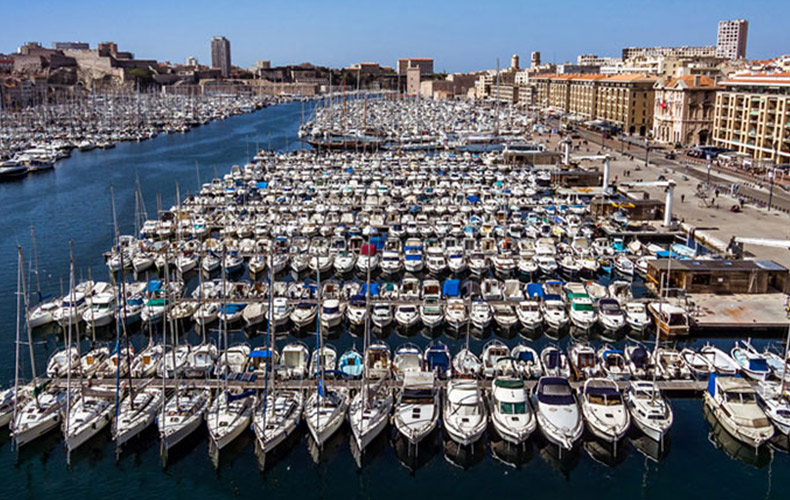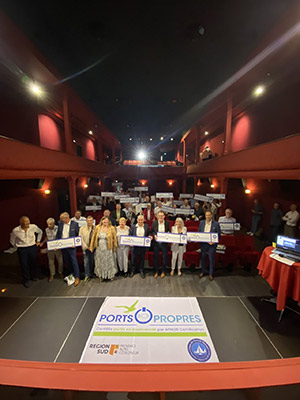Vacations at the right port with “Clean Ports

On June 6, 2023, 24 marinas in the Provence-Alpes-Côte-D’Azur region were awarded the “Ports Propres” and “Ports engagés dans la biodiversité” certifications. This sign of recognition for good ecological practices was awarded to them at an event organized by the Union des ports de plaisance de Provence-Alpes-Côte d’Azur et Monaco (Upaca) and the Provence-Alpes-Côte d’Azur regional council.
” The approach has borne fruit: we’ve seen a return of flora and fauna to the ports involved ,” says Véronique Tourrel-Clément, general delegate of the organization, which groups together 135 ports and 60,000 berths, in 2019.
More recently, the ports of Mèze (Hérault) and Saint-Cast-le-Guildo (Côtes-d’Armor) have also been awarded the title. Today, AFNOR Certification, which assigns an auditor to the requesting port, has 73 of its own ports certified as such, and 35 with a special mention for biodiversity. This distinction will carry even more weight once the International Organization for Standardization (ISO) has made it a voluntary standard, and thus crosses borders. This work will be carried out under French animation.
In Bonifacio, an undeniable return on investment
In Corsica, Bonifacio led the way. Certified “Port Propre” since 2019 and “Port engagé dans la biodiversité” since 2020, the site has implemented a comprehensive approach that is now bearing fruit. It’s not a question of one-off actions, but of constant, long-term reflection in search of coherence and continuous improvement,” stresses Michel Mallaroni, Director of the Bonifacio marina, which has 350 berths and registers 11,000 calls every year. This includes anti-pollution training for staff and the choice of more environmentally-friendly equipment.

Award of AFAQ Clean Port certification to UPACA ports on June 6, 2023.
This approach encourages the port’s teams to integrate these dimensions into all their projects, as a common thread. “This strategy permeates our development and appeals not only to yachtsmen and employees, but also to the residents of Bonifacio, since this is a municipal port, geographically located in the heart of the town. Awareness-raising campaigns, such as the one carried out in the spring of 2023 with ocean racers, help to communicate our commitment. In terms of brand awareness and credibility, the return on investment is indisputable,” continues Michel Mallaroni.
Among the actions carried out under the “biodiversity” pillar, the port has installed artificial nurseries on its pontoons and 14 eco-designed lockers for boats over 24 meters. ” In concrete terms, these structures placed on the seabed form artificial reefs in which marine flora and fauna proliferate,” explains Michel Mallaroni.
Five pillars for certification
Waste management, leakage from careening areas, wastewater… Harbors are subject to numerous sources of pollution, not to mention external sources such as storms and water from the watershed… For many professionals, getting to grips with the subject is a matter of course. Firstly, because of a shared passion for the sea, which is ingrained in all yachtsmen. But it’s also a question of image and strategic development: polluted ports and a sea without biodiversity would no longer attract anyone, which would mean the end of their activities.
The “Clean Ports” certification program meets these expectations. “The approach is based on a robust methodology and on-site audits. Each year, the AFNOR auditor ensures that certified ports are complying with the requirements and improving their practices,” points out Béatrice Poirier, head of the Ecological Transition division at AFNOR Certification. There are five stages in the certification process:
- Environmental study and diagnosis. Inventory of existing situation, prioritization of pollution sources and action program to improve environmental protection.
- Combating chronic pollution, i.e. liquid and solid waste produced by port activities and users: treatment of careening water, treatment of special waste, treatment of household waste, wastewater, etc.
- Accidental pollution control (such as booms or sorbent booms to prevent oil slicks), water saving and energy saving.
- Training port personnel in both theory and practice.
- Raising awareness among port users through port assemblies and national “Clean Ports” signage.
Certified ports can then complete their commitment with the “Clean Ports Active in Biodiversity” label, with specific areas to work on, such as nesting areas for birds, insect hotels or breeding grounds for marine fauna. “One of the strengths of reference systems? Adapt to the specific characteristics of each port, taking into account its constraints, activities and challenges, concludes Michel Mallaroni. While the approach remains voluntary, we believe it is essential to meet the challenges facing not only marinas, but the sea as a whole.